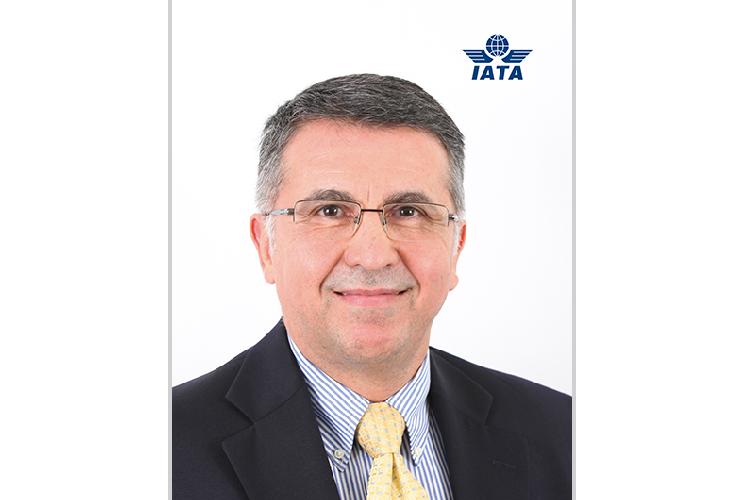
Closer Cooperation between Aviation Stakeholders Urged to Ensure Industry’s Full Growth Potential is Realised
The International Air Transport Association (IATA) says close collaboration between all aviation stakeholders in Jordan is essential for the continual development of the aviation industry and fundamental towards the country realising its full economic growth potential - expected to be amongst the strongest in the region - over the next 5 years.
“According to the latest IATA Global Passenger Forecast, the number of journeys to, from and within Jordan is expected to more than double over the next 20 years, from 6.2 million in 2014 to just above 15 million by 2034. The total contribution of aviation towards Jordan’s GDP, including the wider effects from investment and the supply chain was $2.1 billion in 2014 (6% of GDP) and is expected to more than double over the next 20 years, in line with forecast passenger growth,” said Hussein Dabbas, IATA Regional Vice President Africa and the Middle East speaking to a group of key industry stakeholders at IATA Aviation Day in Jordan.
“These are significant numbers for the country’s economy. In order for the Hashemite Kingdom to realise its full economic potential, it is more important than ever that the country’s aviation stakeholders work together to enhance safety, efficiency and customer service,” he continued.
Dabbas also called for cooperation and collaboration at a regional level. He reinforced the need for all countries in the Middle East to adopt a forward looking emphasis and work together to position aviation as a central component of the region’s long-term growth, ultimately enabling them to reap the economic benefits of the region’s unique geographic position.
“In light of the many emerging business realities facing the region, collaboration, cohesiveness and cooperation are more important than ever. It is predicted that the Middle East will require 3,180 new aircraft over the next 20 years. Their arrival will further exacerbate the very real issue of airspace congestion. It will put more pressure on the region to align with the global industry strategy for reducing aviation’s CO2 emissions. It will drive the development of innovative solutions to ensure the extra 9 million passengers forecast to travel in the region over the next 20 years are catered for,” he said.
Dabbas identified four key challenges needing to be addressed:
· Reducing airspace congestion
Calling on the region to urgently adopt a vision for seamless airspace management and start working together to make it happen, Hussein commented, “Aviation in the Middle East supports 2 million jobs and $116 billion in GDP. Over the next 20 years, air traffic in the region is predicted to grow at an average 6.3% per annum, support 4.4 million jobs and generate almost $350 billion in GDP. However this will only be possible if growth is not constrained by airspace issues. The flexibility of the region’s airspace must be improved if air traffic management is to match growth on the ground. States must commit to making this happen and support all initiatives such as the Middle East ATM Enhancement Program (MAEP) designed to coordinate policy and facilitate operational and technological change.”
· Innovation Travel Solutions
Dabbas praised the region for showing real global leadership on both its commitment to adopting the latest technology and improving passengers’ experience through its adoption of many of IATA’s Fast Travel initiatives such as self-service check in and flight re-booking.
He said, “According to the worldwide IATA Corporate Air Travel Survey, 50% of passengers said they would prefer more self-service options to speed up their journey and reduce queuing times. The region is leading the way in the implementation of innovative solutions that help achieve this. This has led to not only more choice and more control to passengers but cost savings for the industry, translating into a healthier bottom line.”
He also briefly touched on airline distribution which he said was on the verge of a major modernization as the New Distribution Capability (NDC) standards begin to be implemented. NDC is the development of a modern, internet-based data standard for communications between airlines and travel agents. Showcasing the advantages of the NDC he demonstrated how passengers will benefit from greater transparency and access to all of an airline’s offerings when shopping via a travel agent or online travel site and how travel agencies will have a wider range of products and services to sell.
· Safety first
Safety, the industry’s number one priority was also a focus at the event. Dabbas highlighted the positive results of IATA’s 2015 Industry Safety Report which saw the industry enjoy a safer year overall but emphasized that challenges still remained specifically in Africa and the Middle East. He called on government in the region to accelerate the implementation of ICAO’s safety-related standards and recommended practices (SARPS), according to the Universal Safety Oversight Audit Program (USOAP).
- Greener skies
Touching on the environment, Dabbas stressed the importance of the support of governments in the region for the adoption and implementation of a global market-based measure (MBM), to help the aviation industry achieve carbon-neutral growth from 2020.
The IATA Jordan Aviation Day featured participation from senior government and industry leaders including the Minister of Tourism, Nayef Al Fayez, the Secretary General of Ministry of Tourism, Issa Gamouh, the Secretary General of Ministry of Transport, Omar Gharaybeh, the CEO of Jordan Airport International Group, Kjeld Binger, the CEO of Royal Jordanian: Captain Sulieman Obeidat, the GM of Jordan Airports Company: Mohammad Hashim Murtada, the CEO of Jordan Tourism Board, Abdel Razzaq Arabiat and the Chairman of Agents Association, Shaher Hamdan.


























